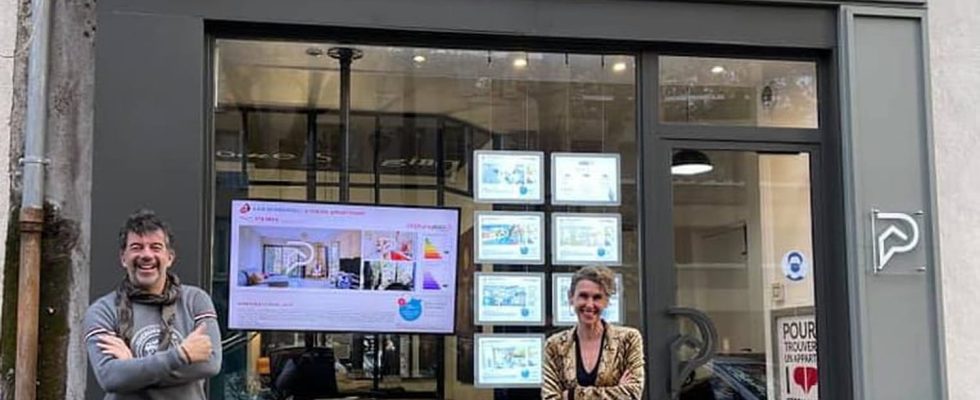French real estate alert! Discover the areas where prices plunge the most and why 2023 could be the year of the reversal.
The real estate market, after experiencing years of effervescence, now seems to be slowing its momentum. The repercussions of the current economic crisis and the increase in mortgage rates are palpable.
Indeed, according to the FNAIM, after reaching peaks in August 2021 with a record 1,206,000 sales over a period of 12 months, the volume of transactions began to run out of steam. According to the latest data, on a rolling 12-month basis to March, this figure fell to 1,069,000, a notable decrease from figures in the recent past. FNAIM forecasts indicate that this trend is likely to continue, with an estimate of 950,000 sales for the full year in 2023, a decrease of 15% compared to the previous year. A blow for the sector, since it would mean more than 150,000 fewer transactions compared to 2022, making this drop one of the largest in half a century.
This slowdown is not uniform and varies by region. Some departments feel this downward pressure more. For example, the Territoire de Belfort experienced a 3.20% decrease in prices, followed by the Alpes-de-Haute-Provence with 2.90% and the Rhône at 2.70%. Other departments such as Haute-Loire and Vendée saw their prices fall by 2.60%. It is interesting to note that, although the decrease is general on the national territory, certain departments are more affected than others. Here is the table of all the departments, classified by percentage of decline:
| Department | Price evolution in the 2nd quarter |
|---|---|
| Territory of Belfort | -3.20% |
| Alpes de Haute Provence | -2.90% |
| Rhone | -2.70% |
| Upper Loire | -2.60% |
| Vendee | -2.60% |
| Finistere | -2.50% |
| Maine et Loire | -2.40% |
| Indre | -2.30% |
| Loire Atlantique | -2.30% |
| Cotes-d’Armor | -2.10% |
| Haute Marne | -2.00% |
| North | -2.00% |
| Val de Marne | -2.00% |
| Ardeche | -1.90% |
| Dear | -1.80% |
| Isere | -1.80% |
| Loire | -1.80% |
| Batch | -1.80% |
| Marl | -1.80% |
| Combine | -1.70% |
| Hauts-de-Seine | -1.70% |
| Meuse | -1.70% |
| Pas-de-Calais | -1.70% |
| Vosges | -1.70% |
| Ardennes | -1.60% |
| Cantal | -1.60% |
| Dordogne | -1.60% |
| Lower Rhine | -1.50% |
| Drome | -1.50% |
| oise | -1.50% |
| adorns | -1.50% |
| Seine et Marne | -1.50% |
| Dawn | -1.40% |
| Morbihan | -1.40% |
| Puy de Dome | -1.40% |
| Ille-et-Vilaine | -1.30% |
| Aïn | -1.20% |
| Gironde | -1.20% |
| Sarthe | -1.20% |
| Savoy | -1.20% |
| Tarn et Garonne | -1.20% |
| Gers | -1.10% |
| Landes | -1.10% |
| Charente Maritime | -1.00% |
| Lot et Garonne | -1.00% |
| Seine-Saint-Denis | -1.00% |
| Yvelines | -1.00% |
| Upper Rhine | -0.90% |
| Haute-Saone | -0.90% |
| Meurthe et Moselle | -0.90% |
| Val d’Oise | -0.90% |
| Yonne | -0.90% |
| Charente | -0.80% |
| Golden Coast | -0.80% |
| Haute-Vienne | -0.80% |
| Hautes-Pyrenees | -0.80% |
| Jura | -0.80% |
| Mayenne | -0.80% |
| Nievre | -0.80% |
| Eure-et-Loir | -0.70% |
| Sleeve | -0.70% |
| Saone-et-Loire | -0.70% |
| Aveyron | -0.60% |
| Eure | -0.60% |
| Haute-Savoie | -0.60% |
| Loir et Cher | -0.60% |
| Sum | -0.60% |
| Upper Garonne | -0.50% |
| Indre et Loire | -0.50% |
| Loiret | -0.50% |
| Moselle | -0.50% |
| Pyrenees-Atlantiques | -0.40% |
| Seine Maritime | -0.40% |
| Vaucluse | -0.40% |
| Correze | -0.30% |
| Calvados | -0.20% |
| Doubs | -0.10% |
| Essone | -0.10% |
| Dig | 0.00% |
| Two Sevres | 0.00% |
| Tarn | 0.00% |
| Aude | 0.20% |
| Ariege | 0.30% |
| High mountains | 0.30% |
| Lozere | 0.30% |
| Vienna | 0.30% |
| Herault | 0.50% |
| aisne | 0.60% |
| Gard | 0.60% |
| Eastern Pyrenees | 0.80% |
| Alpes-Maritimes | 0.90% |
| Var | 0.90% |
| Bouches-du-Rhone | 1.00% |
| Upper Corsica | 2.30% |
| South Corsica | 4.90% |
Loïc CANTIN, President of the FNAIM, evokes this phenomenon by indicating: “After having been carried by attractive interest rates allowing it to remain dynamic until 2022, the real estate market is experiencing a real turnaround.” Inflation and the growing difficulties in accessing mortgages are clearly having an impact, hence the number of transactions which is falling drastically.
While prices had previously shown remarkable resilience, they are now being directly affected by this market downturn. Over the year, their growth slowed, although still rising, to +2.9% (against +6.3% in June 2022). However, the last three months show a much more worrying trend, with a sharp drop in prices of -1%.
If you are considering investing in real estate, keep this downward trend in mind. Current economic conditions, combined with rising mortgage rates, are making the real estate market less attractive than before. Only time and the evolution of the economic situation will be able to tell us if this drop is temporary or if it announces a new normal for the French real estate market.
